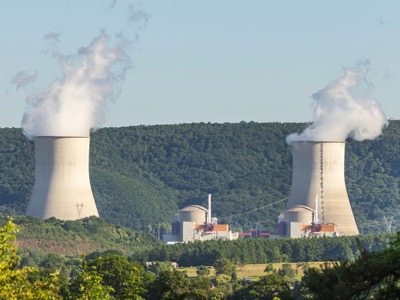The human cause of global warming is a highly contested theory in scientific circles, but not by the United Nations, which has a group of experts responsible for formulating public policy in scientific terms, the IPCC. The German government and the owners of the Metro retail group fund the MCC in Berlin, which goes much further. These bodies promote nuclear power as an "ecological energy source".

The climate clock, installed by Minister Roberto Cingolani on the façade of the Ministry of Ecological Transition, has started counting down: less than 7 years are left before the climate catastrophe caused by global warming. The clock is set to the forecasts of the Mcc Institute in Berlin, not those of the IPCC (the UN Commission on Climate Change). It calculates that the global average temperature, which has risen by about 1°C since the pre-industrial level of 1750, could rise by 1.5°C in 2050 (i.e. in three centuries), mainly because of the CO2 (carbon dioxide) introduced into the atmosphere by human activities, which is causing an intensification of the greenhouse effect. According to UN scientists, the secondary contributor to global warming is the increased activity of the Sun, which for other scientists is the main cause.
In the Milan PreCop, where Minister Cingolani was the main organiser, the complex scientific framework of climate change and its environmental consequences was staged with disaster movie techniques. Faced with the "scientific" prediction that within seven years planet Earth will be submerged by climate catastrophe, the 400 young people gathered by Cingolani in Milan from all over the world demanded that the fossil fuel industry be shut down before 2030 and that governments stop funding it now, replacing it with green sources that do not emit CO2. Minister Cingolani has committed to this goal. This could be done if Italy had a strategic plan for an integrated energy system based on photovoltaic and especially thermodynamic solar energy (with mirrors that concentrate the sun’s rays), and on large wind farms, especially offshore (with wind turbines installed in shallow or floating waters). The innovative thermodynamic solar project developed by Nobel Prize winner Carlo Rubbia, which would have made it possible to produce a third of Italy’s electricity needs with some zero-emission solar power plants, was deliberately buried, and this technology is now being used in China. The construction of offshore wind farms has been thwarted, so much so that there is only one, in Taranto.
But Minister Cingolani has the "solution": nuclear power. Cingolani declared this openly and polemically when he was invited by Matteo Renzi to the Italia Viva School of Political Education [3]. The Minister thus sponsored a symposium of nuclear supporters. Not by chance after meeting John Kerry, the US president’s special envoy for climate management, who has been converted from an opponent to a supporter of nuclear power. Immediately Matteo Salvini lined up behind Cingolani, saying: "A nuclear power plant in Lombardy? What’s the problem? So in Italy, too, the powerful nuclear lobby has taken root, and it has already obtained a first and fundamental result in the EU: the Joint Research Centre, commissioned by the European Commission, has included nuclear power among the "green energy sources" supported and financed by the European Union to eliminate CO2 emissions by 2050.
The EU is thus reviving the nuclear industry at a time when it is in deep crisis due to rising costs and technical problems. While solar power plants can produce more electricity than nuclear power plants without additional costs or dangerous emissions, the cost of temporarily storing the enormous amount of radioactive waste produced by the EU’s nuclear power plants is expected to be 420-570 billion euros. To this must be added the enormous amount needed to decommission the plants themselves, most of which have reached or exceeded the age limit of 35 years, becoming increasingly expensive and dangerous. Meanwhile, the International Atomic Energy Agency has authorised the dumping of more than one million tonnes of radioactive water, accumulated in the Fukushima nuclear power plant after the 2011 accident, into the sea. As a result, cancer deaths from this "green energy source" will increase.







Stay In Touch
Follow us on social networks
Subscribe to weekly newsletter